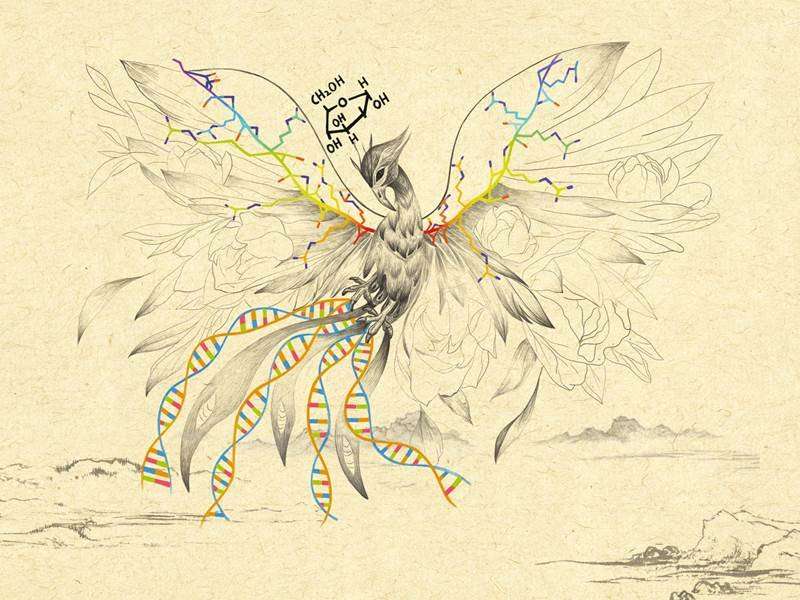Improving gene delivery methods

Scientists in China are exploring new ways to treat cancer using gene therapy. We find out how their work inspired this beautiful and intricate design on the cover of Polymer Chemistry.
Gene therapy is a way of treating disease by altering a patient's DNA – replacing or disrupting defective genes. An important step in this process is gene delivery, whereby foreign DNA is introduced into a host cell. The process usually requires a carrier, a large molecule such as a polymer, to convey the DNA through the body to the target area.
Yongzhuo Huang, from Shanghai Institute of Materia Medica (SIMM), along with coworkers from various Chinese universities, designs drug carriers to deliver DNA for the treatment of cancerous tumours.
Yongzhuo: Gene delivery faces lots of challenges, such as instability in the blood stream, lack of targeted delivery function, and problems with the biocompatibility of the drug carriers.
The high-molecular-weight polymer polyethylenimine (PEI) is the most commonly used gene polymeric carrier. However, it normally has poor biocompatibility due to its non-degradability, largely limiting its clinical translation.
The CPP is cationic (positively-charged), and can bind with the anionic (negatively-charged) gene drugs, forming a nano-structured complex. Moreover, CPP-based delivery has been called a "Trojan Horse" technique, because the CPP is able to carry various drugs through biobarriers such as cell membranes.
This system efficiently delivers a DNA that encodes a signalling protein termed TRAIL to the tumour; TRAIL can activate apoptosis – cell death – and kill the cancerous cells, while sparing the normal cells.
The mannosylated PEI–CPP not only improved the efficiency of gene delivery, but also enhanced the effectiveness of treatment and reduced side-toxicities.
Yongzhuo: When we drew a schematic illustration of the DNA chain, its double-stranded pattern reminded us of beautiful bird tail feathers. It seemed natural for us to compare the peptide chains to the stretching wings. We also drew the sugar mannose's structure, which looked like a crown. We shaped an idea around these elements, and came up with a preliminary sketch. We decided to design a unique mascot, called Fenghuang, for this DNA delivery system. Fenghuang is the Chinese mythological bird that traditionally symbolizes peace, prosperity or happiness.
We then came to Dr. Kai Li, a previous colleague at SIMM, who kindly helped us and successfully finalised the beautiful artwork.
More information: Zhenzhen Pan et al. A mannosylated PEI–CPP hybrid for TRAIL gene targeting delivery for colorectal cancer therapy, Polym. Chem. (2017). DOI: 10.1039/C7PY00882A
Provided by Royal Society of Chemistry




















